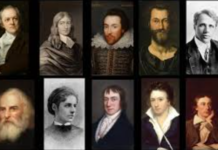 Fashion Flashback: Exploring the Iconic Style of the Sixties
Fashion Flashback: Exploring the Iconic Style of the Sixties
Introduction: Decade of Fashion Revolution
1. Setting the Stage: Overview of 1960s Fashion
The Sixties marked a top notch generation of dynamic shifts in style, mirroring the cultural and social adjustments of the time. From the remnants of the state-of-the-art Fifties to the bold, progressive sorts of the new technology, the Nineteen Sixties encapsulated a length of unparalleled creativity and diversity in style.
2. The Dichotomy of Sixties Fashion: A Study in Contrasts
2.1. Polarized Trends
In the realm of style, the Nineteen Sixties became characterized via a bipolarity that manifested in every factor. Vibrant colors clashed with subdued colors, whilst psychedelic styles coexisted with minimalist designs. This dichotomy symbolized the clash between culture and innovation, conservatism and liberation.
2.2. Fashion Rebels
The youngsters culture of the Sixties rebelled against conventional norms, embracing audacious patterns that confounded the sartorial requirements of the past. From psychedelic tie-dye shirts to daringly quick skirts, style have become a method of self-expression and rebellion.
Exploring Key Fashion Trends of the Sixties
three. Silhouettes and Styles
three.1. Daytime Elegance
- The normal daylight appearance featured bulbous hats, excessive bouffant hairstyles, and silhouettes with deep armholes and extensive sleeves.
- For evenings, slim silhouettes ruled, with lengthy-waisted clothes and sequined ensembles changing the outfitted waistlines of the past.
3.2. Architectural Inspirations
- Contemporary architecture and sculpture stimulated style designers to create bloused, bias-cut garments, sashed tunics, and short skirts.
- Collarless coats and attire, together with draped cover backs, accentuated the elongated appearance preferred during this era.
4. Color Palette and Fabrics
4.1. Kaleidoscope of Colors
- The Nineteen Sixties saw a resurgence of deep, darker colors along with grape, plum, and olive green, alongside neon bright shades like hot crimson.
- Plaids and abstract prints motivated with the aid of expressionist art ruled the style scene, including a colourful touch to garb.
4.2. Fabric Innovations
- Wools and lightweight materials like cotton and wool blends had been preferred for his or her versatility and comfort.
- Abstract silk designs and porous woolen textures contemplated the era’s experimental spirit and penchant for innovation.
five. Iconic Accessories and Jewelry
five.1. Statement Accessories
- From cross-go boots to outsized sun shades, add-ons played a pivotal role in defining 1960s fashion.
- Turbans, fur coats, and colourful earrings, which includes geometric shapes and plastic resin designs, added flair to clothing.
five.2. Hairstyles as Accents
- Hairstyles of the Sixties ranged from the long-lasting beehive to the pixie crop, symbolizing the technology’s diversity and experimentation.
- Both men and women embraced formidable cuts and patterns, reflecting the changing cultural panorama.
Fashion Icons of the Nineteen Sixties
6. Jackie Kennedy: Epitome of Elegance
- Jackie Kennedy’s timeless style, characterized by using easy lines and flawlessly matched add-ons, captivated audiences global.
- Her impact extended past fashion, shaping the aesthetic sensibilities of an entire technology.
7. Twiggy: The Face of the Decade
- Twiggy’s androgynous allure and one-of-a-kind fashion made her an icon of the swinging sixties.
- Her pixie crop and thick eyelashes epitomized the youthful, avant-garde spirit of the era.
8. Mary Quant: Pioneer of Youth Fashion
- Mary Quant revolutionized fashion together with her playful, adolescents-driven designs, which include the long-lasting miniskirt.
- Her shift attire and bold prints epitomized the exuberance and freedom of Nineteen Sixties style.
Legacy and Influence
9. Enduring Trends
- The legacy of Sixties fashion lives on within the undying appeal of key trends including the miniskirt, shift dresses, and bold add-ons.
- The era’s emphasis on self-expression and individuality maintains to encourage cutting-edge designers and fashion fans.
10. Conclusion: Embracing Diversity
The 1960s became a decade of sartorial revolution, in which limitations had been driven, and norms were challenged. From the subtle beauty of Jackie Kennedy to the avant-garde style of Twiggy and Mary Quant, the decade celebrated diversity and creativity in style like never before.
Frequently Asked Questions (FAQs)
1. How did Sixties fashion replicate the social moves of the generation?
- The fashion traits of the Sixties mirrored the cultural shifts and social actions of the time, with patterns evolving to embody youngsters subculture and revolt.
2. What had been some key affects on Sixties fashion designers?
- Contemporary architecture, artwork actions like Pop Art, and cultural icons inclusive of The Beatles and Jacqueline Kennedy influenced designers’ creative imaginative and prescient at some point of this period.
three. What are a few enduring fashion legacies of the Sixties?
- The miniskirt, shift attire, and formidable accessories are just a few of the enduring fashion legacies that originated inside the Sixties and continue to steer contemporary fashion.
4. How did Sixties style empower girls?
- 1960s style empowered ladies through challenging conventional gender norms and presenting a platform for self-expression and individuality thru garb.
5. What role did style icons like Twiggy and Jackie Kennedy play in shaping Sixties style?
- Fashion icons like Twiggy and Jackie Kennedy played a giant position in shaping Sixties style, influencing trends and placing the usual for beauty and innovation.















